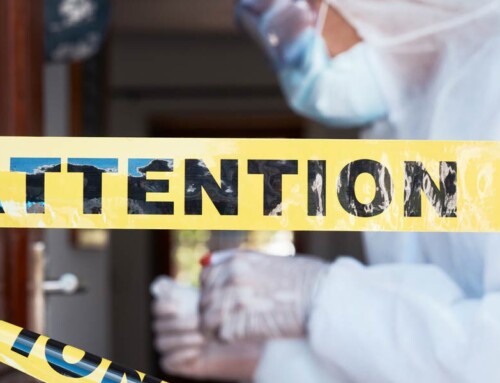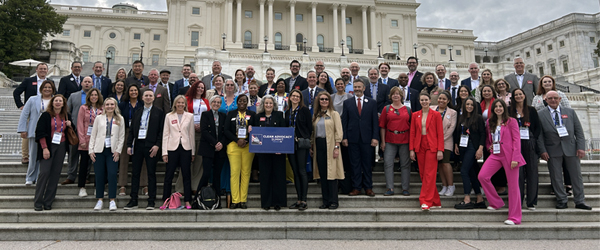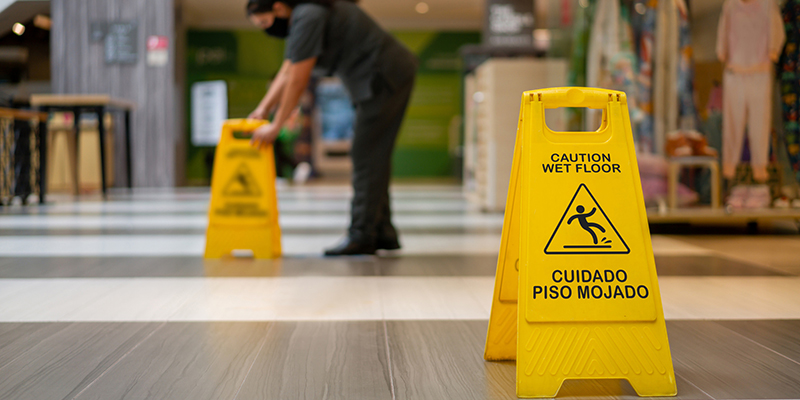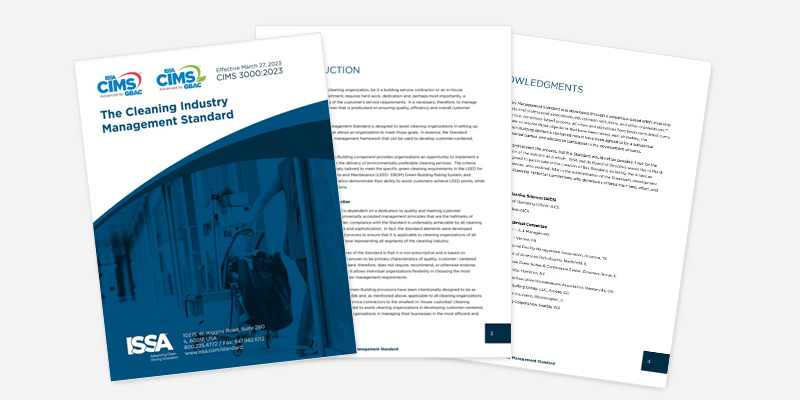The Science of Alcohol-Based Hand Sanitizers and Norovirus
November is a month of preparation, for Thanksgiving, Christmas, Hanukkah, New Year’s—and, sorry to be a Scrooge—norovirus.
According to the U.S. Centers for Disease Control and Prevention (CDC), the peak season for norovirus is November through April. However, while many schools, hospitals, businesses, restaurants, and other facilities—including cruise ships—continue to stock up on alcohol-based hand sanitizer (ABHS), science has proven that these formulas do not protect against norovirus. In fact, the CDC and other agencies warn the public not to rely on hand sanitizer to combat norovirus.
For more than 35 years, I was involved in hand sanitizer manufacturing, selling to some of the largest healthcare facilities in the world, and I am a huge proponent of ABHS for many applications, even though we have always known about ABHS’ lack of nonenveloped viral efficacy. But before I explain why ABHS is ineffective against norovirus, let’s look at what norovirus is and why an outbreak is so dangerous.
A Brief Definition
Norovirus, commonly known as the stomach flu, includes a group of viruses that cause acute gastroenteritis and inflation of the stomach and intestine linings. Unrelated to influenza (the flu), the highly contagious norovirus can cause days of nausea, vomiting, diarrhea, and fever. In extreme cases, it can lead to severe dehydration, reduced nutrient absorption, and death.
As for how it is spread, Sara Mirza from the CDC’s norovirus team told Time, “About 80% of the transmission occurs when the virus spreads from person to person.” This is why healthcare facilities, restaurants, schools, daycare centers, cruise ships, and other environments with regular person-to-person contact are particularly susceptible to norovirus outbreaks.
Some Scary Statistics
According to the National Foundation for Infectious Disease (NFID), norovirus in the United States causes:
- 19 to 21 million cases of vomiting and diarrhea
- Nearly 2.3 million outpatient visits
- 450,000-plus emergency department visits
- 109,000 hospitalizations
- 900 deaths
According to the CDC, the norovirus is especially dangerous for young children. Of children under five infected:
- One in 40 will go to the emergency department
- One in 160 will be hospitalized
- One in 110,000 will die.
The CDC also reports that norovirus accounts for 50% of all foodborne illness cases in the United States. Yet the country is hardly alone. According to the U.K. Health Security Agency, by mid-March, norovirus cases had already soared to their highest level in more than a decade. Laboratories reported 77% more cases of norovirus than the five-season average before the COVID-19 pandemic.
Simple Science: Why ABHS Does Not Work
Norovirus is a nonenveloped virus, which makes it more resistant to pH and temperature changes. It is completely unaffected by some disinfectants, including alcohol. This is because alcohol, regardless of strength, cannot penetrate the protein shell, or capsid, surrounding a nucleic acid core. In contrast, SARS-CoV-2, the virus that causes COVID-19, is an enveloped virus, which means that it has a fragile covering that is easily penetrated by alcohol sanitizers.
The Experts Weigh In
Numerous studies and experts, including Dr. Lee-Ann Jaykus, a professor in the food, bioprocessing, and nutrition sciences department at North Carolina State University, often dubbed “the norovirus woman,” report that ABHS is ineffective in killing norovirus. In an interview, Jaykus definitively told Time that hand sanitizers won’t inactivate norovirus.
This statement has been backed by the CDC numerous times. A decade ago, the agency published research declaring ABHS and some other disinfectants “useless” against norovirus. In 2017, CDC’s former branch chief for viral gastroenteritis, Dr. Aron Hall, agreed, telling NBC News that ABHS is ineffective against the virus and that “soap and water can wash it away, but it takes really hot water to kill it.”
Most recently, in February 2023, senior Forbes contributor Bruce Y. Lee quoted Hall: “Alcohol gels won’t kill the virus. Even if you were to use so much hand sanitizer on your hands that you felt like you were wearing hand sanitizer mittens, the live virus could still remain on your hands.”
Today, the CDC’s website states, “Hand sanitizer does not work well against norovirus … and is not a substitute for washing your hands with warm water and soap.”
Notifying the public is the least the CDC is obligated to do. However, considering how much the CDC recommended ABHS during the pandemic, the agency needs to do more to make sure that all of the people that have been conditioned to use ABHS are aware that ABHS does not kill norovirus.
Perhaps even more unsettling is that as early as 2011, studies showed that ABHS was not only ineffective but may increase the risk of outbreaks of highly contagious diseases—such as norovirus—because people, especially in healthcare settings, are more likely to use it than to wash their hands. The prevalence of ABHS use during and since the COVID-19 pandemic has helped spread this false sense of security at a wildfire pace.
Why Handwashing Isn’t Working
As previously mentioned, killing norovirus “requires really hot water,” 140°Farenheit or hotter, to exact, which would scald human hands.
Handwashing can remove norovirus—but only if it is performed properly and thoroughly, which studies show most healthcare workers do less than 50% of the time. More discouraging, the U.S. Department of Agriculture (USDA) found that research subjects preparing meals in a test kitchen washed their hands improperly 97% of the time. Greatly complicating the situation are the many situations where water is not readily available for handwashing, which turned ABHS into the hero overnight during the COVID-19 pandemic. This begs the question, what is the superhero with the efficacy to protect us against norovirus?
HOCL to the Rescue
In humans, hypochlorous acid (HOCL) is created by white blood cells to defend against infection, bacteria, and general illness. HOCL works by breaking down the cell walls of pathogens, then killing them. Outside the body, HOCL is made using electrolysis to break down a simple saltwater solution. It contains no alcohol, benzalkonium chloride, hydrogen peroxide, or other chemicals.
U.S. studies show that HOCL is effective against a wide variety of viruses. As in the human body, HOCL has been shown to inactivate enveloped viruses and nonenveloped ones like norovirus. Yet HOCL is also safe enough to be used in products such as wound care and eyecare formulas and for the U.S. Food & Drug Administration (FDA) to approve it as a non-rinse sanitizer for meat, poultry, fish, vegetables, and fruits. It also is an approved hand sanitizer in the United Kingdom and Europe.
Yet, not all HOCL-based products are the same. They have varying percentages of HOCL and free available chlorine, shelf lives that can vary from days to years, and pH ranges from acidic to alkaline, making some unadvisable for use on the skin.
As Cleveland Clinic dermatologist Dr. Shilpi Khetarpal advised in a recent interview, make sure to verify a product with HOCL is billed for skin care before using it on yourself.
S-HOCL: The Best of the Best
The best HOCL antimicrobial spray for hand hygiene you can choose contains stabilized hypochlorous acid (S-HOCL), which has all the attributes of HOCL plus unique benefits that make it exceptionally well suited for use in Hand Hygiene.
S-HOCL is hypoallergenic with a neutral pH to make it safe for use on skin, a feature few HOCL solutions can match. The best formulas have a two-year shelf life compared to the 30-day shelf life of most HOCL. It is also advisable to look for an S-HOCL hand hygiene spray with an antimicrobial designation that has a 510K registration and is FDA-cleared. All the better if it is accepted by the National Eczema Association and has other safe skin designations from reputable organizations.
ABHS is excellent for protecting against COVID-19 and other illnesses caused by enveloped viruses. But when it comes to protection against norovirus, ‘tis the season for a hand hygiene antimicrobial spray with S-HOCL.
For more on the science of alcohol-based hand sanitizers, tune into this episode of BioTalk, a GBACtv production.

















